A taste of culture
Traditional Chinese yellow wine is an irreplaceable inheritance of Shaoxing in China. It symbolizes the cultural identity and the traditional city profile of the ancient river-city. The quality of the yellow wine is highly dependent on the Jianhu River in Shaoxing.
In face of the unsustainable ways of industrial wine production and the traditional Chinese yellow wine as a cultural icon was unable to self-renew and the loss of its relevance is becoming a concern.
The goal
Hence, the project focuses on the sustainability of culture and nature and aims to achieve co-existence between old and new culture. Also, it proposed ways for water recycling and reusing through the reformed industrial wine park.
Reform does not represent killing the old, but a coexistence between the old and new systems in a certain hierarchy. The traditional wine production can express a sense of Jiangnan historical culture value while the industrial wine production can guarantee the effective productivity. Take into consideration of the urban evolution, water sustainability and cultural coexistence is delivered holistically via the three systems, they are traditional and modern program systems, industrial systems, and water feature systems, and they are integrated together to show a new-age thinking.
A reinterpretation
The projects delivery a re-interpreted notion of traditional courtyard/Jiangnan city pattern through a contemporary context, and re-establishing the conversation between modern and tradition, and demonstrate the contrast between modern and traditional architecture language through the choice of material and form. This type of contrast in architecture language also aims to show the possibility of harmonious co-existence and beauty between modern and traditional architecture, technology as well as culture.
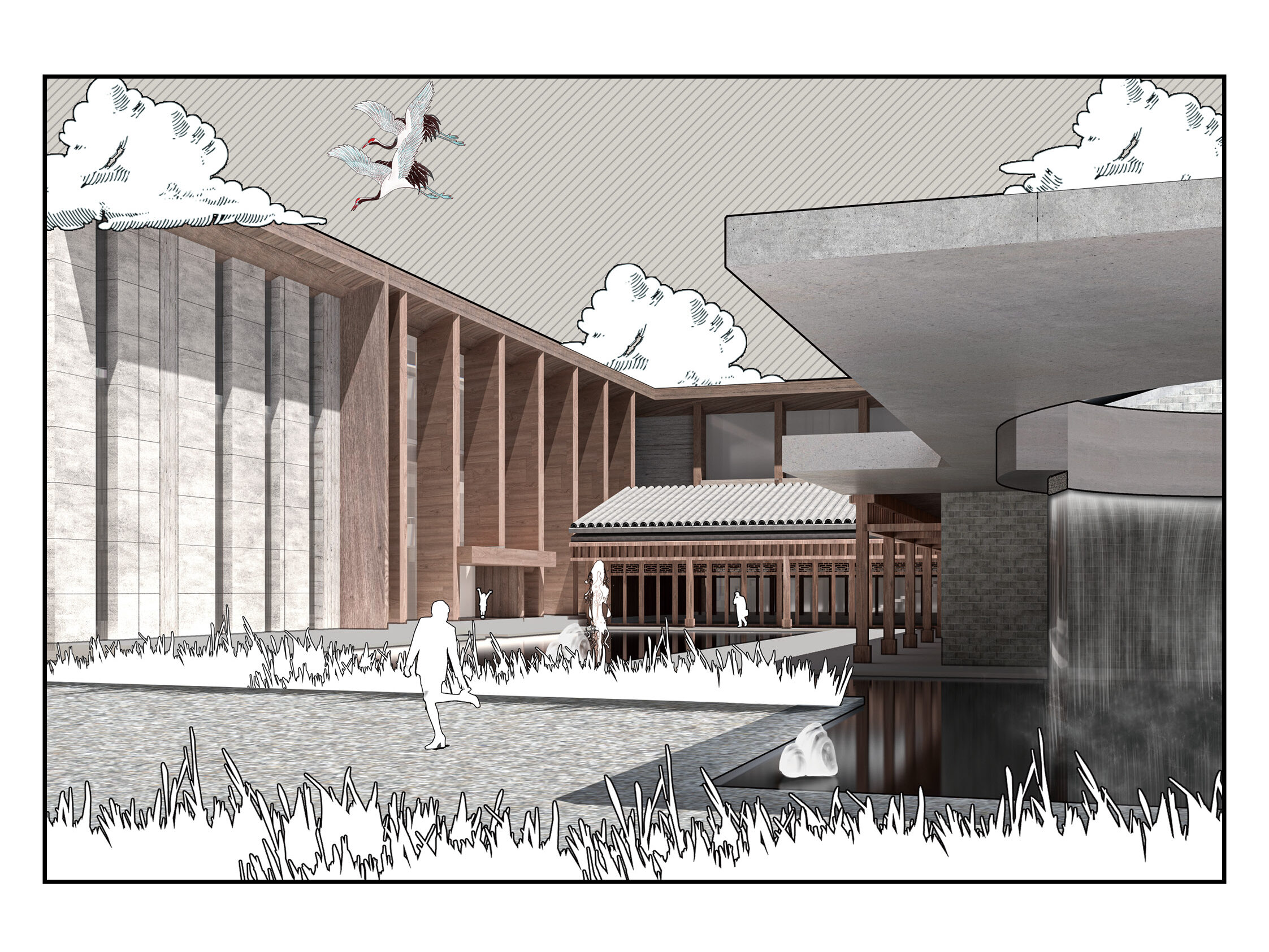
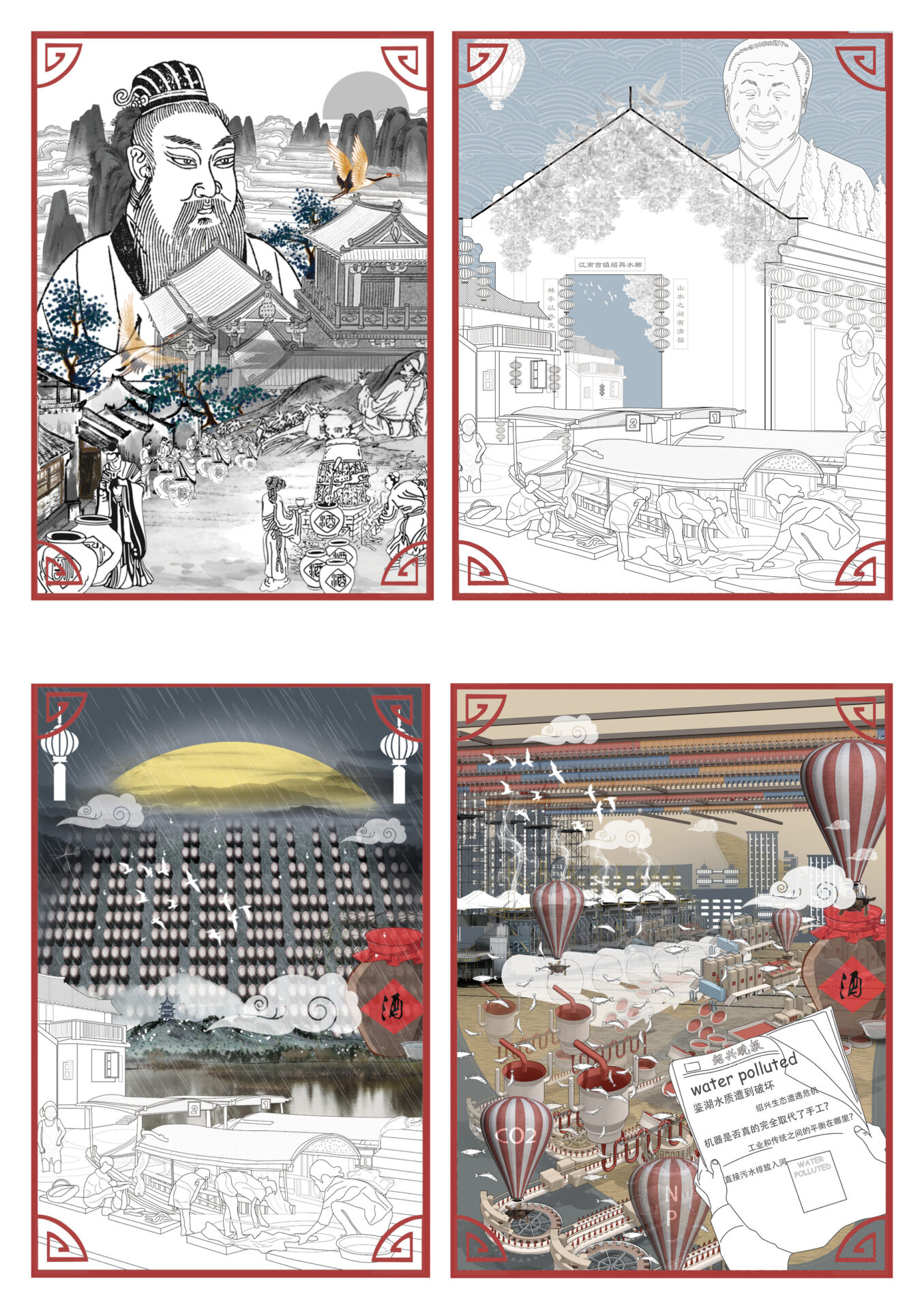

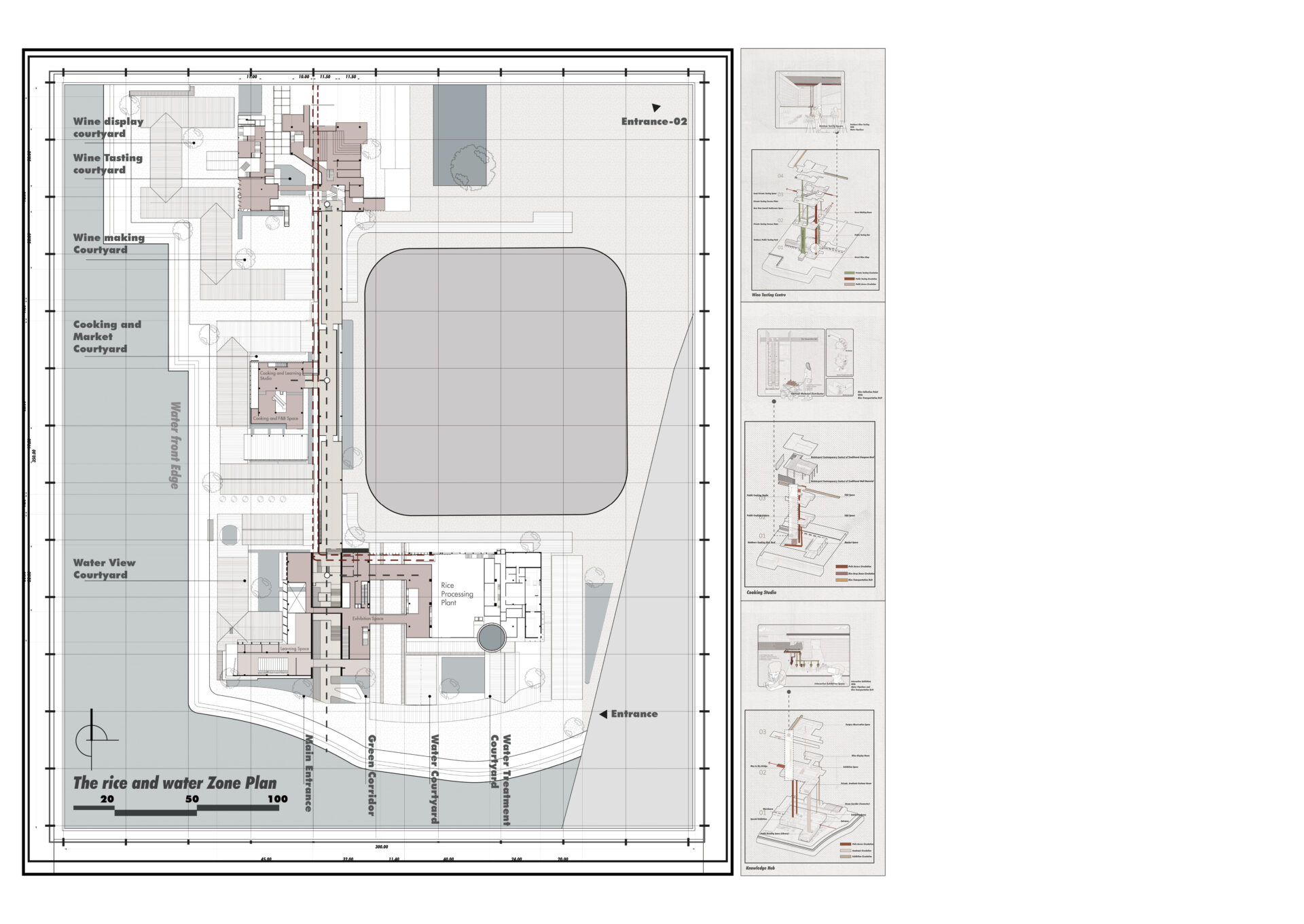
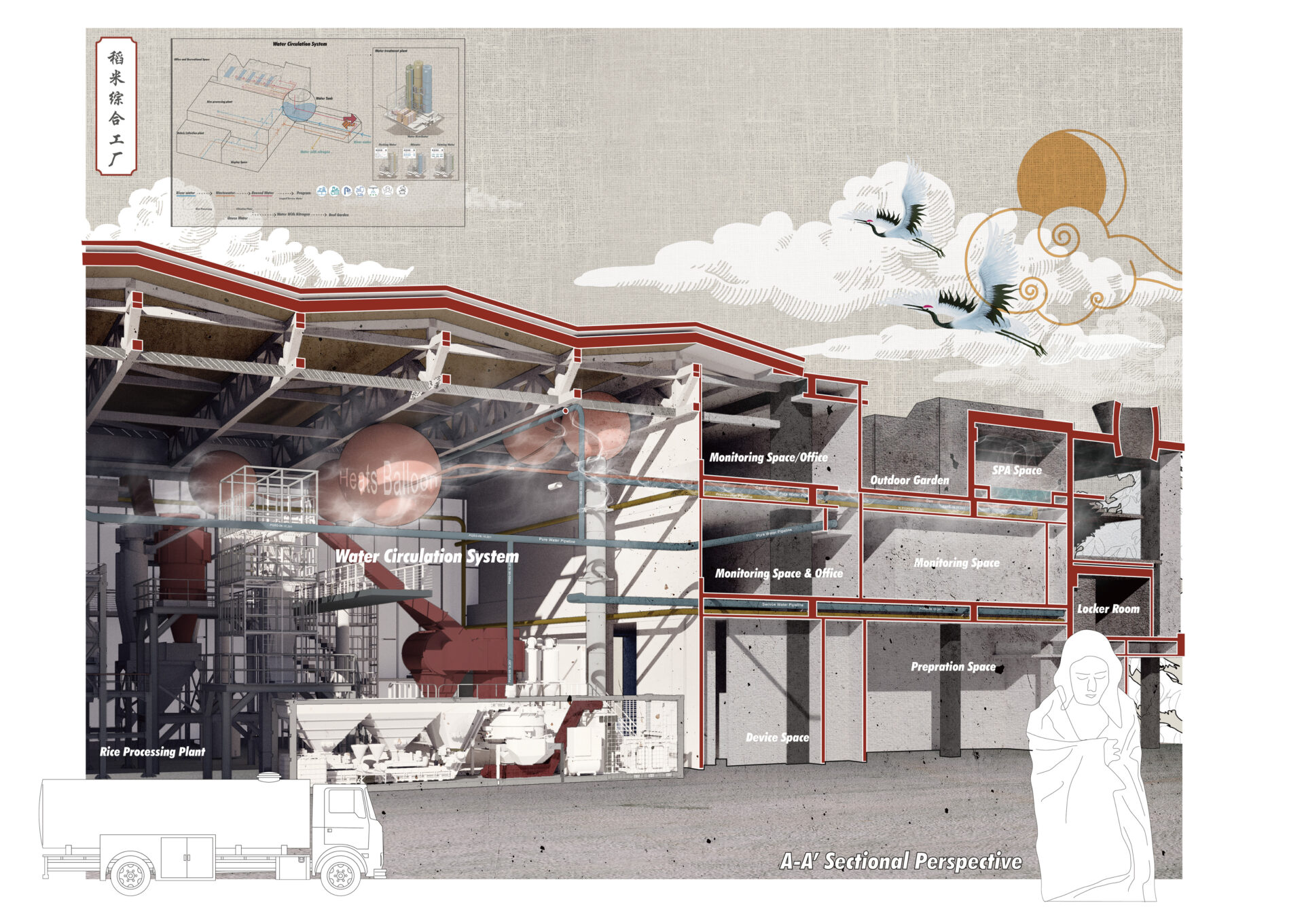
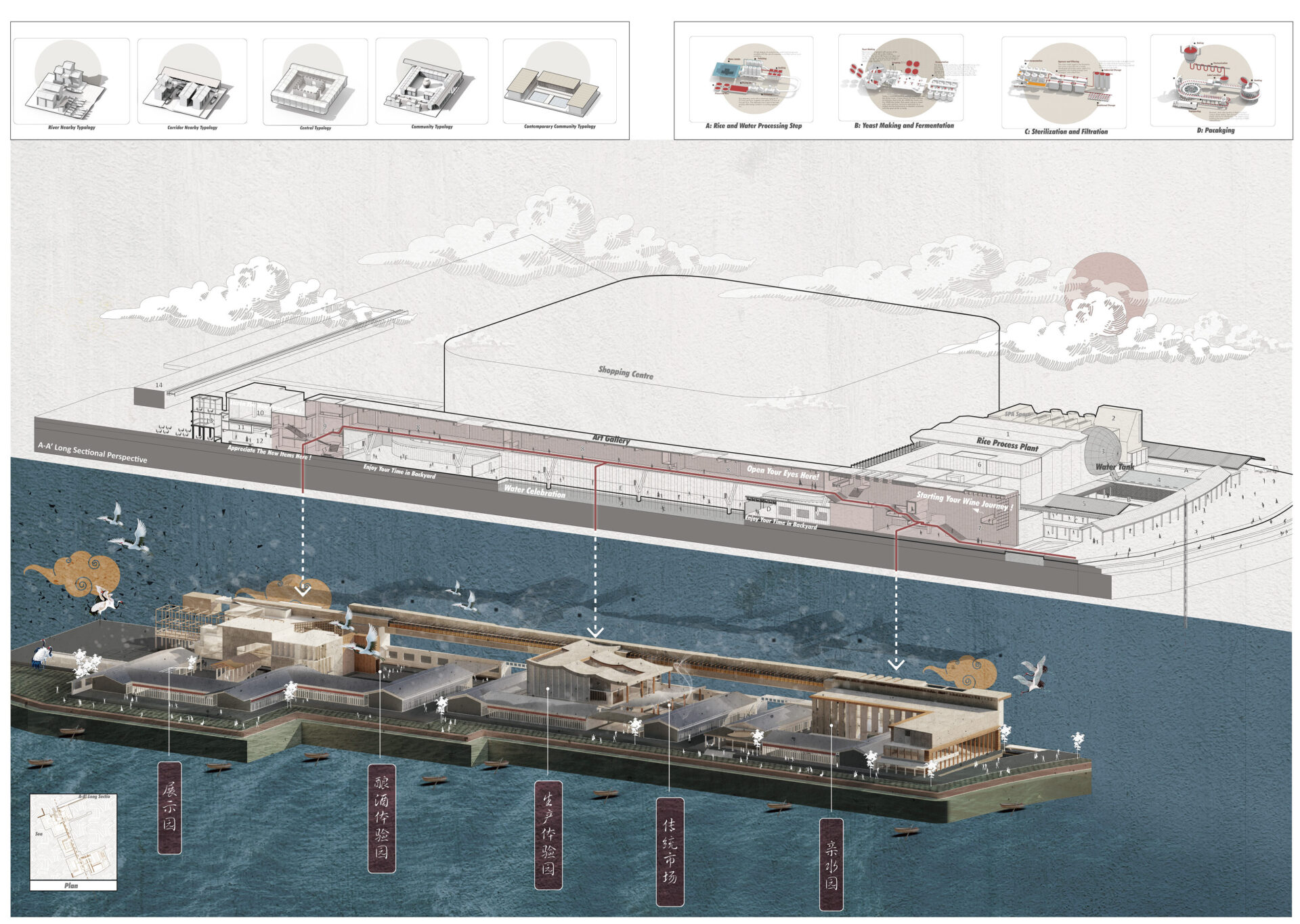
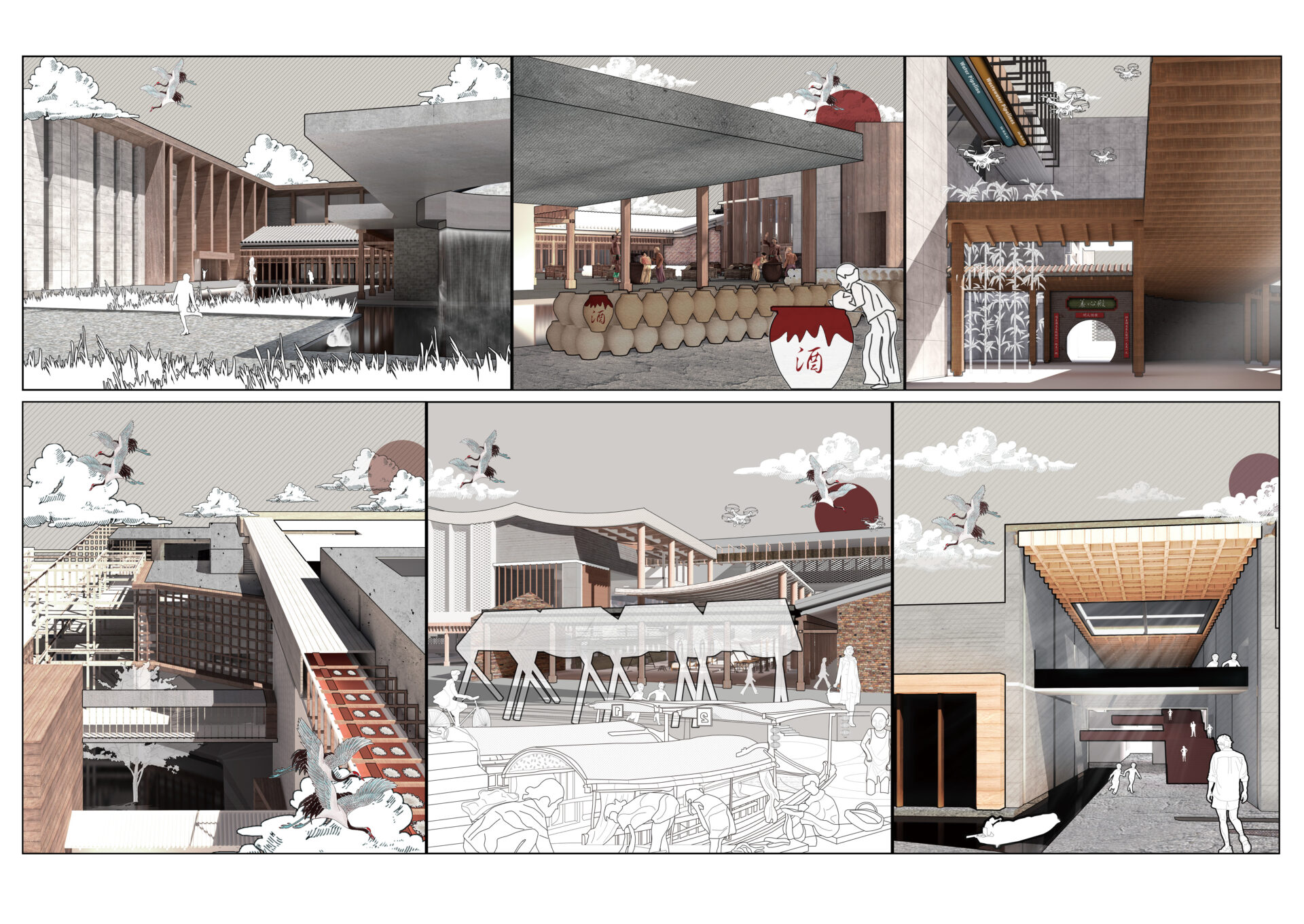
Supervisor's comments:
Industrial mass production processes usually do not go hand-in-hand with traditional production methods. Qinzhe’s thesis explores the co-existence of traditional wine production with the modern industrial production process in Shaoxing, Zhejiang, China. His research uncovered that the secret of Shaoxing wine lies in the climatic condition and quality of the natural water source of Shaoxing. The project integrates water conservation for both the traditional and industrial production processes, highlighting the advantages of economies of scale through sharing. The project demonstrates that tradition and heritage can be a resource amidst growing industrial pressure, thereby contributing to good architecture.
- Adj. Assoc. Prof. Teh Joo Heng